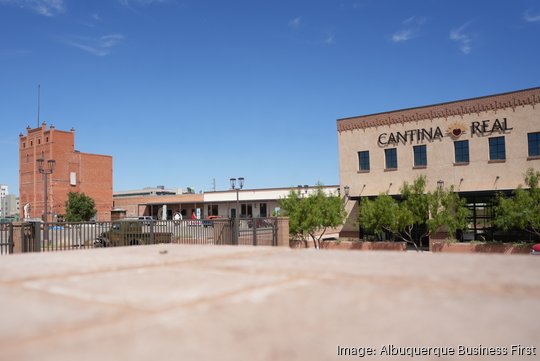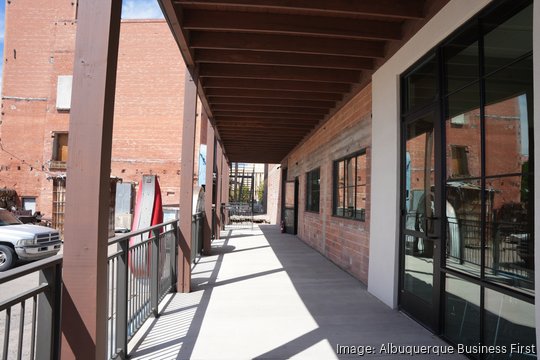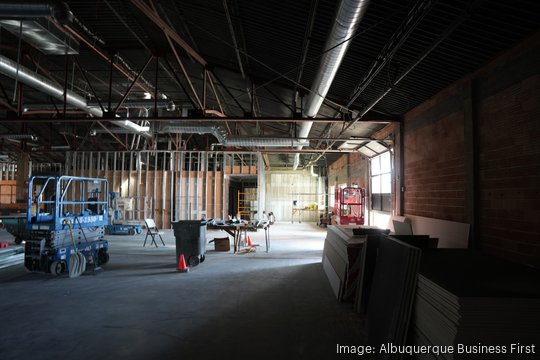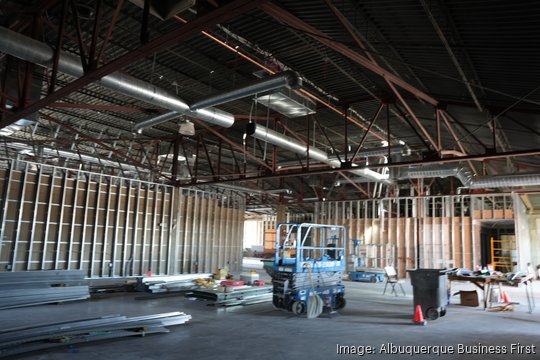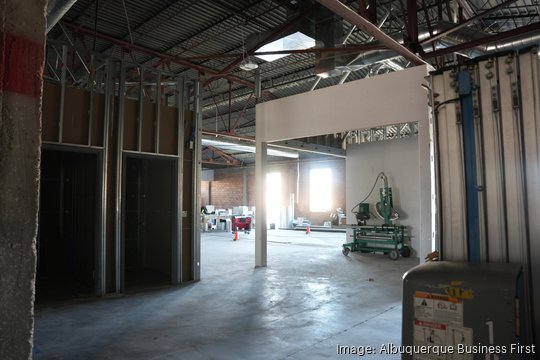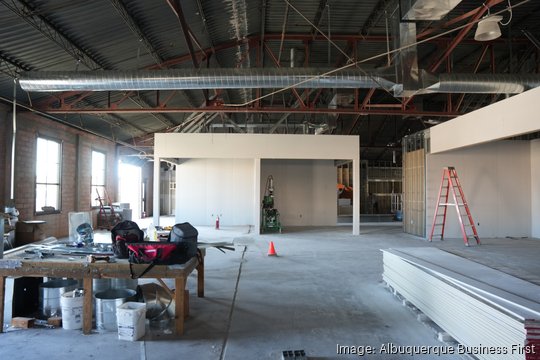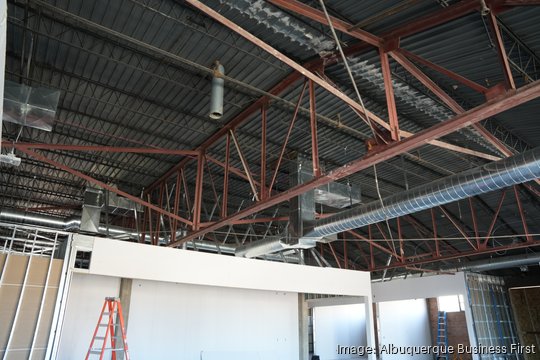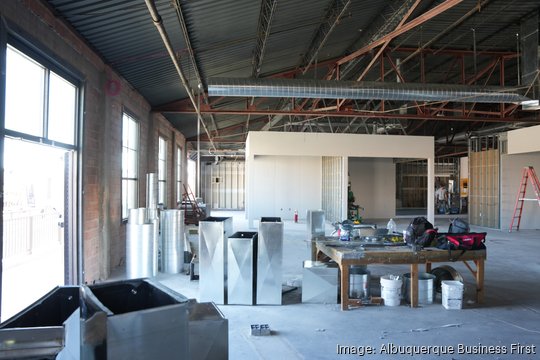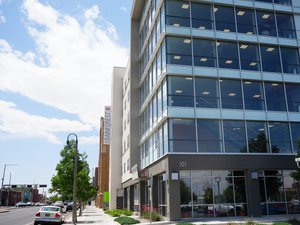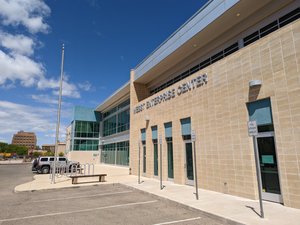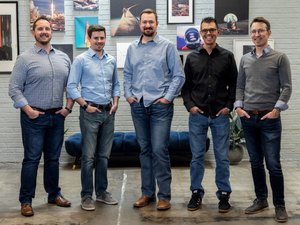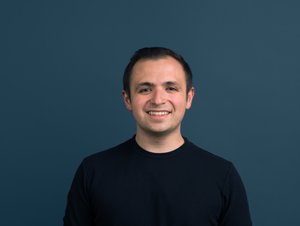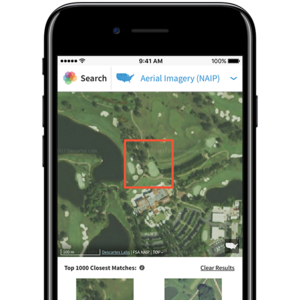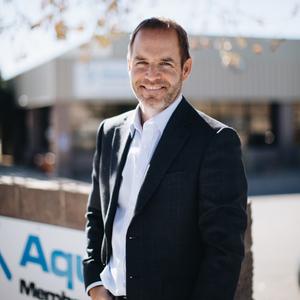In late June, Albuquerque and the wider New Mexico technology and innovation community were introduced to Roadrunner Venture Studios, an upstart organization that wants to find promising research and development at the state's national laboratories and universities and spin it into commercially viable companies.
Months after the community showcase, Roadrunner is on the fast track to opening its first venture studio in Albuquerque. It's currently under construction at Glorieta Station, a multi-acre redevelopment project at the north end of Albuquerque's Innovation District — an area that spans from Central Avenue north to Lomas Boulevard, bordered by Broadway Boulevard to the east and the railroad track that runs through Downtown Albuquerque to the west.
The approximately 10,000-square-foot studio is on track to open this December. Roadrunner is leasing the studio space from Garcia Realty Group, which owns the building at where the studio will be housed.
A slew of local firms are working on the studio. Roadrunner tapped SMPC Architects to lead the studio's architecture and design. AIC is the project's general contractor, and Five Ton Monkey is contributing some fabrication work for the studio.
And to help with the venture studio's design, Roadrunner selected Ground Up, a multidisciplinary creative studio based in New York that specializes in the built environment. Karen Zabarsky Blashek founded the agency about two years ago.
"We really see the space — as opposed to being just kind of another incubator or another coworking space — as a piece of the much bigger narrative of innovation in New Mexico," Zabarsky Blashek said. "We see ourselves in the context of that unbelievable legacy of innovation."
For instance, Zabarsky Blashek said the designers took inspiration from New Mexico's well-known national laboratories, including Los Alamos National Laboratory and Sandia National Laboratories. Those labs have elements that are "larger than life," which could help inspire those working in the studio, she added.
One example of such design choices surrounds the studio's planned event area — what Zabarsky Blashek called "the heart of the space." That area was originally tucked away in a corner of the studio.
"We brought it out to be the first thing that kind of hits you in the face as soon as you walk in," she said. "Because from my perspective this history of innovation in New Mexico, of course it belongs to the scientists and the innovators who created it, but it also very much belongs in the public imagination."
It's part of Zabarsky Blashek's hope to create a connection between a public gathering area just outside Roadrunner's studio and the interior of the studio itself. Plans call for a small display space just off the event area where people can peek through windows to check out art or pieces of technology, she said.
While the front half of the studio will be more public-facing, the back half will be a bit quieter, taken up by office space for incubator companies, closed meeting areas and a large, glass-enclosed conference room. A workshopping area will also be included, plus small private spaces for phone calls.
Click through the gallery at the top of the page to see inside Roadrunner's work-in-progress venture studio.
Its location as part of the Innovation District in Downtown Albuquerque is intentional, said Sandra Hirschberg, an advisor to Roadrunner Venture Studios. Glorieta Station, where the studio will be housed, is across from the WESST Enterprise Center and down the street from the Lobo Rainforest Building and the FatPipe ABQ Coworking Space. It's also not too far from Nob Hill, where Q Station, an Air Force Research Laboratory-backed collaborative space, is located, Hirschberg pointed out.
"There's just so much more geographic synergy that we're able to create in the arena for everybody," she said. "It's nice to have that feeling that more happens when we're closer together."
A venture studio works differently than a typical venture capital firm, Adam Hammer, Roadrunner's president, told Albuquerque Business First in late June. Instead of putting money into existing companies in return for some stake in those companies, venture studios act to build startups from the ground up by extracting fresh technologies still in the research and development phase.
Roadrunner, in particular, wants to help build "deep tech" startups in New Mexico. Those could span different sectors, from space technology to advanced manufacturing to high-performance computing.

The venture studio could employ around 10 people full time, plus some part-time advisory staff once fully operational, and it would look to invest money into early funding rounds of startups in the state, Hammer said.
Official renderings of Roadrunner's venture studio are still in development but could be released in coming weeks, a spokesperson for the organization told Business First.
